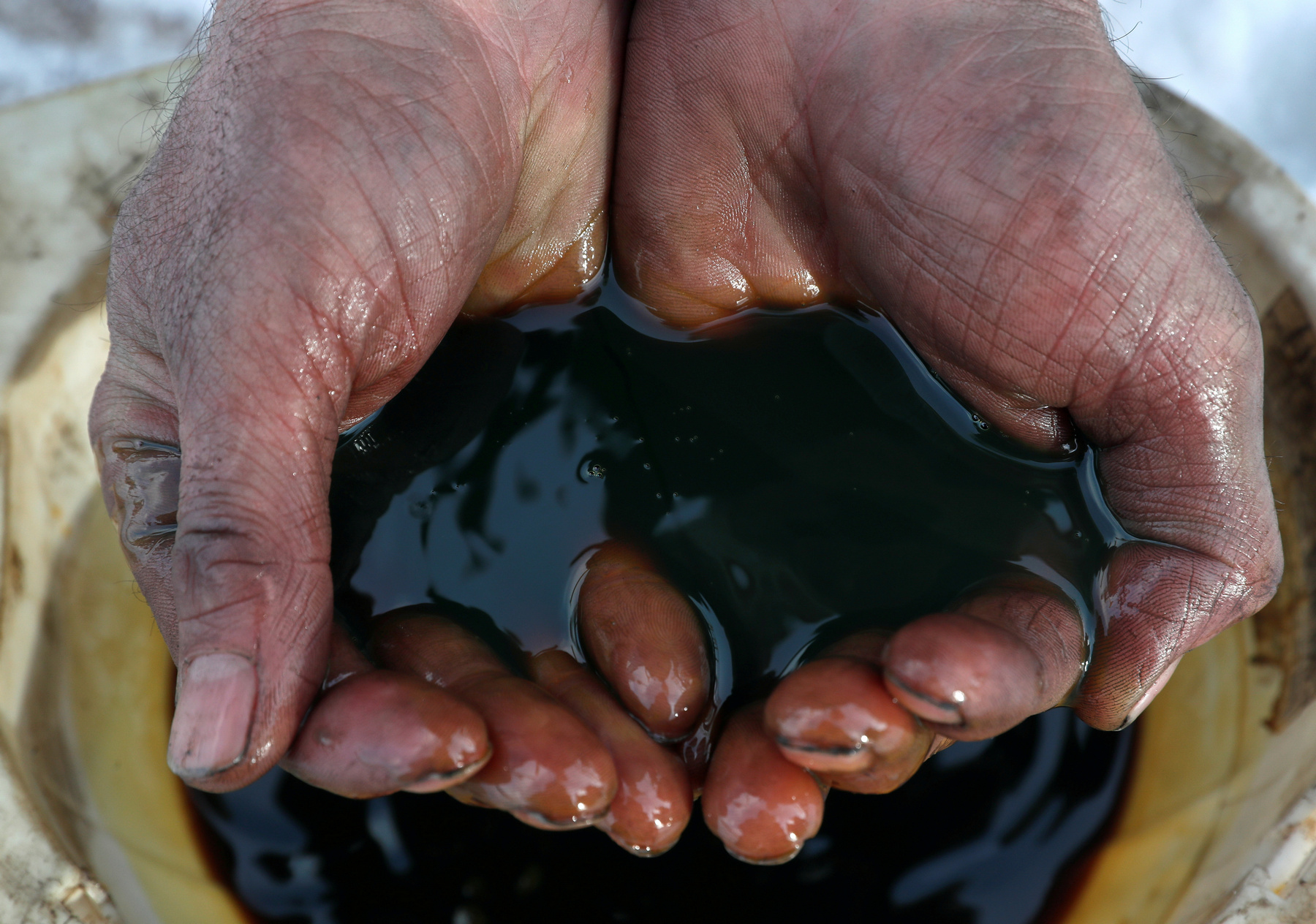As Russia’s victory over the coronavirus, proclaimed by the Kremlin several times already, becomes less and less obvious, the economic situation continues to improve, and there are reasons to believe that this positive trend will persist, even though nobody even dreams about returning to high growth rates. For the time being, we have seen real incomes stabilising, unemployment declining, and the rouble getting locally stronger, coupled with some easing of international tensions and, much more importantly, a rise in global commodity prices, notably for oil.
Today, the effects of this increase cannot be overestimated. In the last 12 months (from 1 July 2020 to 30 June 2021), the price of Brent oil has risen by 79%, from USD 42 to 75 per barrel; the price of coal has risen 2.75 times on world markets while European imports of natural gas have more than quintupled. Although the share of oil and gas revenues in the federal budget was declining over the past few years (from a peak of 51.2% in 2014 to 28% in 2020), this was not so much due to economic diversification as because of the drop in oil prices and, consequently, the inflow of foreign currency into Russia. The revenues planned by the authorities for the current year were based on the average Urals oil price (which is now quoted at almost the same level as Brent) of USD 43.3/barrel, but the first two quarters have already seen the figure exceeded by almost 60%, and the recent quoted price of USD 76/barrel has been the highest one since October 2018. This year, oil and gas revenues could go above the target by USD 50bn (3.5-4 trillion roubles), generating a budget surplus for the fourth time in the last ten years. However, can we actually say that the Kremlin has been as lucky again, in much the same way as in the 2000s or early 2010s?
This statement, if taken as a call to action, can play a nasty trick on those who get carried away by the apparent success. When making plans for the future, two factors should be considered today.
On the one hand, it is important to realise that the main reason for the current price rises is not a fundamental increase in demand but, rather, a speculative game triggered by a huge influx of money supply during the pandemic. The US alone has increased its public debt by USD 4.9 trillion since the beginning of 2020, while governments around the world have injected USD 12–17 trillion into the economy. Much of this money went to the stock and commodities markets, driving prices across almost the entire spectrum of positions. Not only oil and gas, but also metals, foodstuffs and fertilisers went up in price by 60 to 200% during the last year. At the same time, consumer inflation has remained virtually unnoticeable, both because the share of commodities in the GDP of developed countries does not exceed 6–8% at present, and because retailers’ margins often reach 50–80% and can be quickly adjusted without raising the final prices if the market becomes highly competitive. Oil, which has increased in price by 80% over the last year, will certainly not stay at this level as it is the most traded commodity on the world markets. However, its global consumption (USD 2.32 trillion in 2019, which was a fairly representative year), is six to seven times lower than the recently issued volume, which means that speculative money will continue to flow into this market. Lately, many recognised analysts have talked about the possibility of oil hitting USD 100/barrel next year, but in fact we are likely to see this price level reached even before Christmas. Moreover, the demand for commodities is rebounding quite rapidly as part of ‘going back to normal’ because people, tired of pandemic restrictions, are trying to compensate for the reduced consumption in 2020 (including travel, holidays and purchases of durable goods). Also, it should be remembered that some authorities have announced major programmes to support the economy through infrastructural development, which will prolong the rally around commodities. Thus, the current prices, which are superbly comfortable for Russia, will persist in 2022–2023, although historical price records might not be broken.
On the other hand, the word is currently witnessing a rise of a new industrial revolution, aiming to change the main source of energy. The focus is on electricity generated with sustainable methods (mainly from solar and wind power), as well as hydrogen, which can replace traditional oil and gas in more ‘conventional’ engines. This shift is taking place in the context of a discourse about the need to combat climate change, which sometimes provokes scepticism from those who believe that the human impact on global warming has not been proven. The problem, however, does not lie in the scientific validity of this claim, but rather in the fact that governments have already forced businesses to include the new goals in their priorities. The competitive race in this sphere began back in the mid-2010s. Power companies alone have recently invested over USD 2.5 trillion in developing new technologies. All the leading automotive companies are striving to completely phase out petrol and diesel engines by 2030–2035. In most developed countries, solar cells have become more financially efficient than centralised power generation. Today, it seems that the ‘clean energy’ trend is there to stay. In this light, the global warming debate is no longer accurate: the development of alternative energy generation will not stop, even if it suddenly turns out that elevated CO2 levels are less of a threat and more of a necessity to mankind. Moreover, we should not forget that it is not just about oil and gas: elevated requirements regarding environmental compliance will inevitably trigger a global system of discriminatory measures against metallurgy, chemicals and even agricultural producers, whose production facilities cause environmental damage which is currently considered unacceptable (Russian metallurgy stands a chance of being the first industry to experience this blow in the next few years). By 2030, the trend towards significant reduction in the consumption of traditional energy sources will become obvious, and by 2050 the amount of oil and gas burnt in the world may be halved versus today’s volumes. These critical resources will follow in the footsteps of coal, losing their share of the global energy mix not because of their depletion but due to technological transformation.
In Russia, the latest technological trends are approached very differently. In competitive industries (such as telecoms or banking), any new development is leveraged and commercialised as rapidly as in developed economies (and customers are usually provided with even more services and at lower prices than in the West). The situation is radically different in the energy sector and metallurgy, however. We remember perfectly well how Gazprom was refusing to recognise the prospects related to fracking or liquefied natural gas for a long time. The share of steel produced in electric furnaces in Russian steelworks is almost three times lower than in Europe. This arrogance, demonstrated by big companies and often also by the government structures behind them, could lead to a situation where, by the end of 2020s, Russia will end up in a kind of ‘perfect trap’, with consequences comparable only to those of the late 1980s.
In the context of the locally favourable situation on commodity markets, Russia will not be able to overcome the temptation to increase its budget expenditures. Such demands will be voiced by the citizens since the Russian ‘commercial state’ has closed the competitive path to prosperity for them, by the bureaucrats, who are used to living comfortably at the expense of the state, as well as by the army and the security forces, which will continue to scare the Kremlin with illusory external and internal threats. Expenditures will continue to rise (it is important to note that, unlike revenues, expenditures have never declined in the last 20 years: Russia did not experience a real budget curtailment until 1998) until it becomes clear that the main source of Russian wealth has dried up. This scenario is reminiscent of what happened in Latin America in the late 1970s and early 1980s. On the wave of skyrocketing prices on natural resources, many governments in the region were able to increase their budgetary expenditures two to five times. In order to achieve their targets within a shorter time, they attracted large foreign loans. The prospects seemed bright. However, after the United States raised the Fed interest rate to 15–16% per annum in 1979–1981, debt servicing became prohibitively expensive. In 1982, prices on natural resources collapsed sharply and a wave of bankruptcies swept through the region, coupled with political instability and inglorious attempts at carrying out ‘socialist modernisation’. In 1982–1984, the affected countries engaged in difficult negotiations in Washington, seeking debt forgiveness and restructuring, which ended in the adoption of the Brady Plan, and their economies were thrown into a long period of stagnation (many never returned to the GDP (PPP) per capita levels, which spiked in 1977–1978).
The trends we are currently witnessing in the developed world mean that the Latin American scenario is extremely likely to be repeated in Russia. The return of high commodity prices for the third time since the 2000s and early 2010s may finally convince Russian leaders that this ‘magic wand’ works without fail. However, it must be borne in mind that the Russian economy and politics in the mid-2020s will be much less flexible than in the 2000s. Entrepreneurs’ income is shrinking, rent-financed social expenditure is growing, while populism and the suppression of dissenters are becoming the official policy of the authorities. Such a mix builds a clear economic and political ‘tunnel’ that does not leave room for the much needed modernisation. Such modernisation was possible in 2009–2010 and even in 2020, when falling rents pushed the Russian authorities into action, and a subsequent increase of rents could help to finance the modernisation processes. However, such a somersault will become completely unrealistic in late 2020s and early 2030s because there will be too many ‘holes to plug’. While this will not necessarily trigger a political revolution and the collapse of Putinism, the thoughts of Russia as a strong economy can be forgotten.
In the last half-century, the Western world turned out to be much more flexible economically and financially than might have been expected. Realising its dependence on commodity suppliers, it transformed the financial system by undermining the Bretton Woods agreements, shattering the hopes for a ‘New Global Economic Order’, which was the dream of decolonised peripheries in the 1970s. Finding itself dependent on suppliers of cheap industrial goods, the Western world is now working its way towards the biggest technological revolution, with some of the most daring financial experiments in history being added to it. Every sharp turn in the history of the global economy takes humanity to new levels of prosperity and success while also creating groups of outsiders who get stuck on the margins for a long time.










